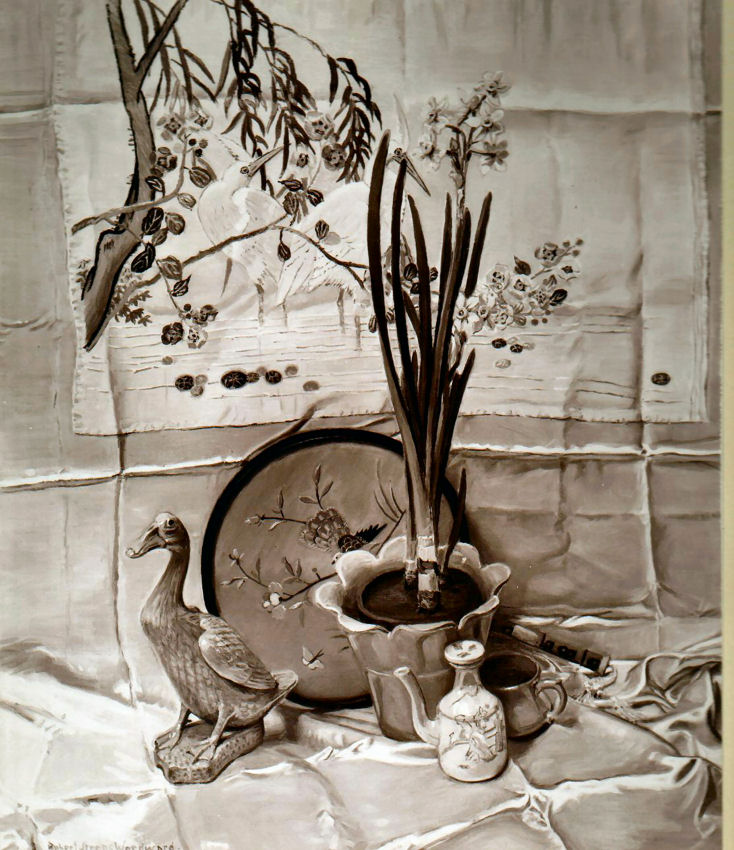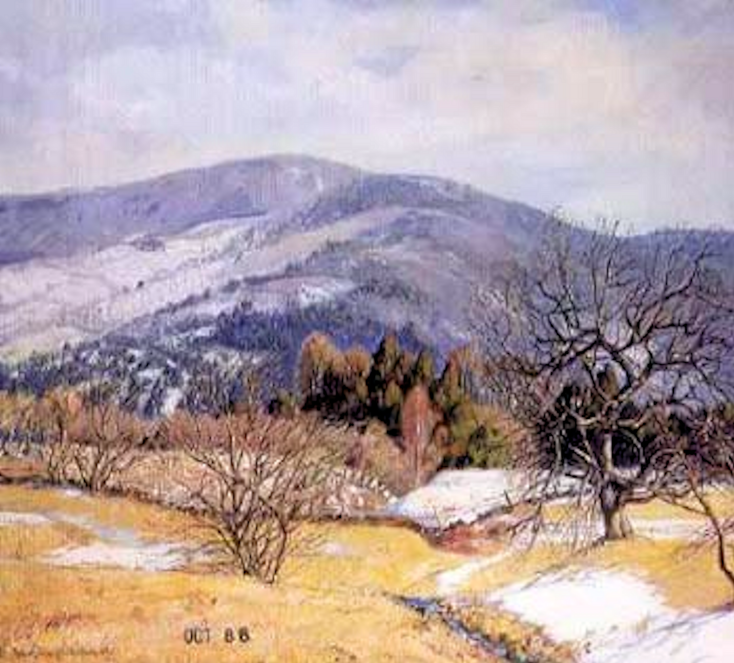Quick Reference
1938
Studio
Oil on Canvas
Still Life
Still Life
25" x 30"
Vose Galleries (Boston), 1938
Grand Central G. (NYC), '39,'41,'45
Williston Academy, 1941
Northfield Seminary, 1941
Deerfield Valley AA, 1941
Springfield Art league, 1942
The Guild of Boston Artist, 1943
Dr. B. Thurber Guild
NA
Related Links
- See also the...
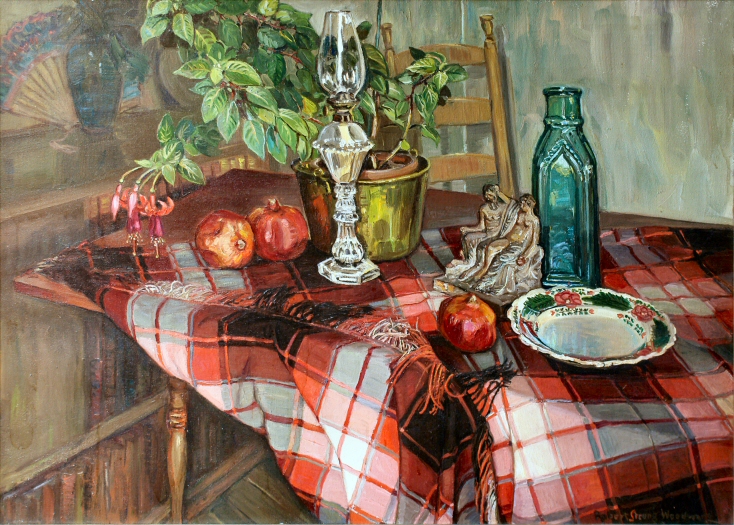 Still Life & Interiors Gallery to view related pieces.
Still Life & Interiors Gallery to view related pieces.
- See also the...
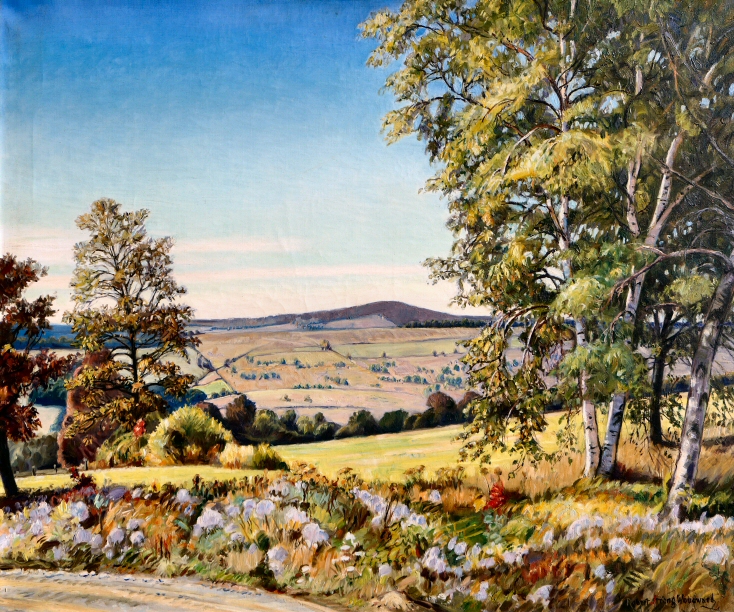 Landscapes & Views Gallery to view related pieces.
Landscapes & Views Gallery to view related pieces.
- See also the...
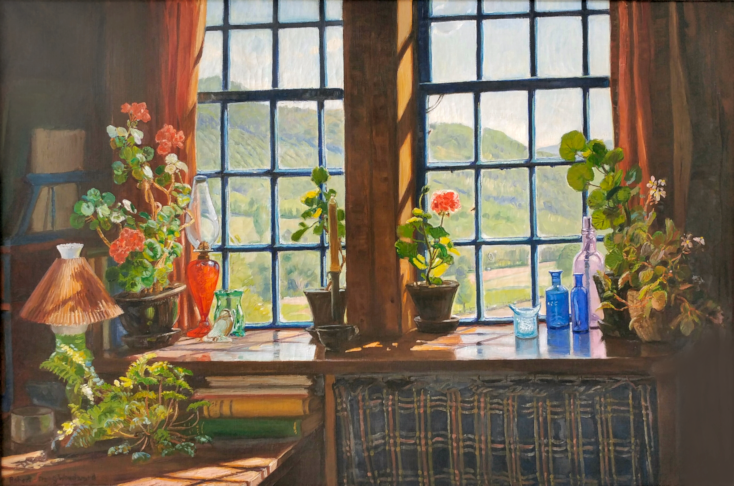 Window Picture Gallery to view related pieces.
Window Picture Gallery to view related pieces.
- See also RSW's ...
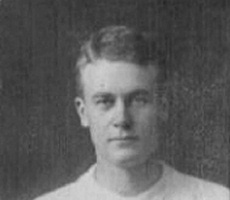 Personal Friends Gallery
Personal Friends Gallery
- See our page devoted to ...
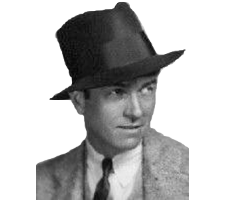 RSW friend and Hollywood Interior Designer Harold Grieve
RSW friend and Hollywood Interior Designer Harold Grieve
- See our page devoted to ...
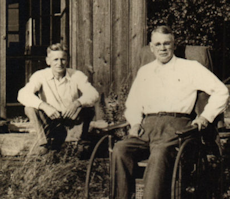 RSW friend, educator, and amateur photographer F. Earl Williams
RSW friend, educator, and amateur photographer F. Earl Williams
- See also our ...
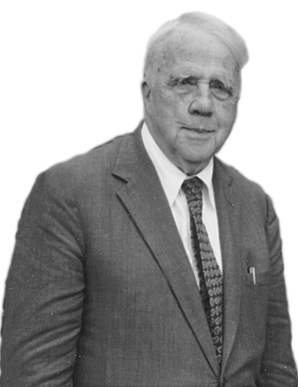 Scrapbook page devoted to RSW's friend and famous poet Robert Frost
Scrapbook page devoted to RSW's friend and famous poet Robert Frost
- See also the...
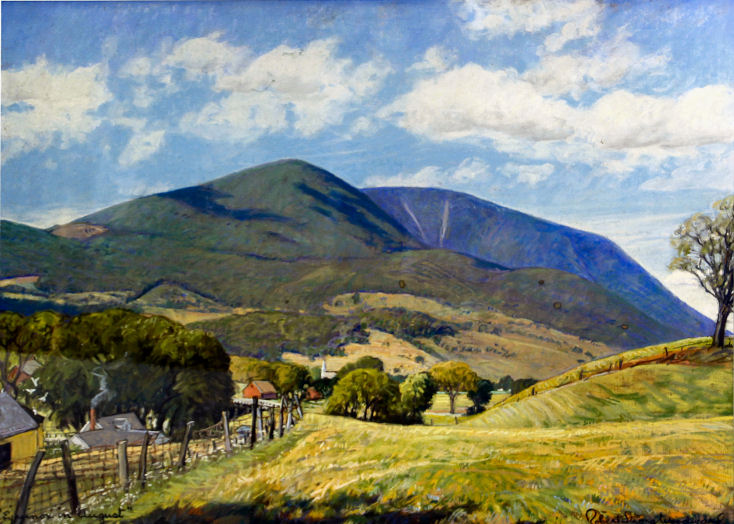 Mountains Gallery to view related pieces.
Mountains Gallery to view related pieces.
- See also the...
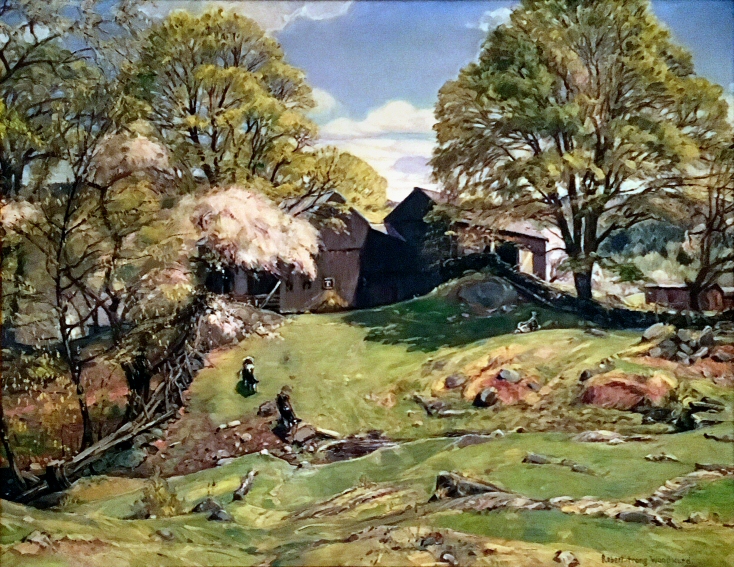 Pastures Gallery to view artwork.
Pastures Gallery to view artwork.
- See also the...
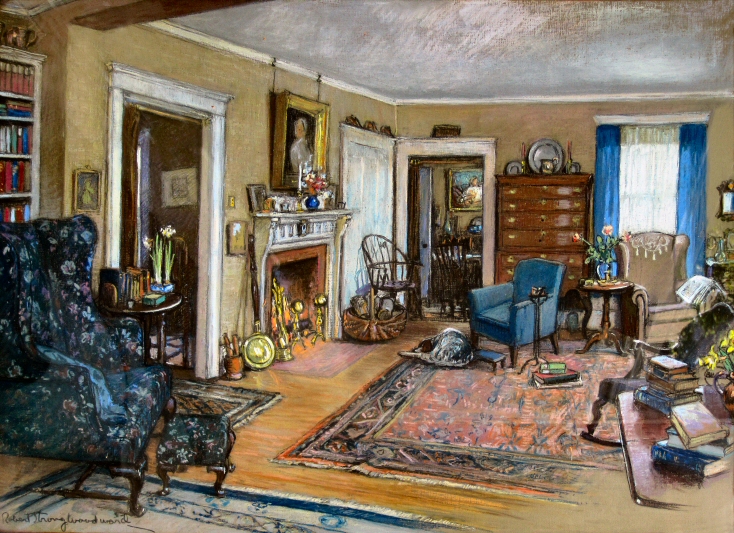 Chalks & Crayons Gallery to view other drawings
Chalks & Crayons Gallery to view other drawings
Featured Artwork: The Chinese Lily
RSW's Diary Comments
"Painted in 1938. Probably the handsomest still life I ever painted. Yellow Chinese lily in green jar, henna colored round Chinese fan, my yellow Chinese duck, other small things---resting on and back-grounded by a fold-creased piece of white satin, on the vertical part of which is sewed a piece of colorful Chinese embroidery. Much exhibited, enthusiastically admired but not bought until July, 1946, when Dr. B. T. Guild, Barker's Road Point, Sands Point, Long Island, N. Y. bought it. (Along with "Winter Song" for his wife.) The Guilds are my close friends and it hangs in a very beautiful home."
Additional Notes
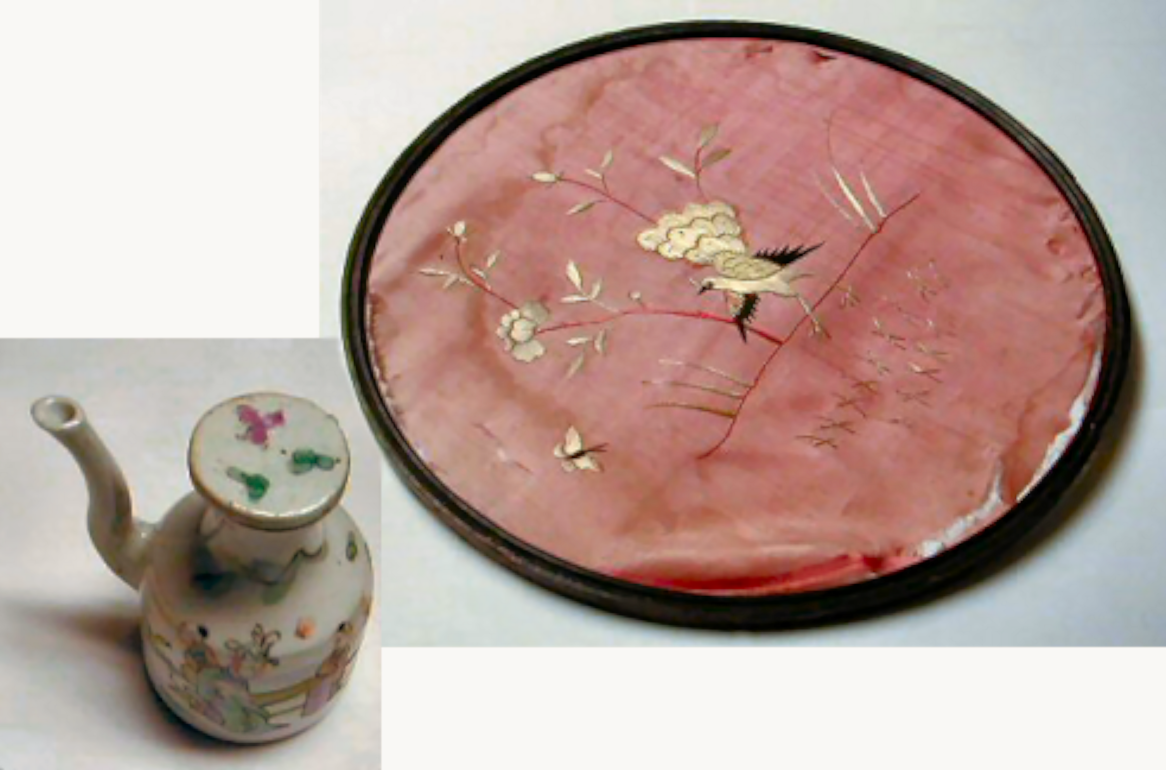
 The Japanese tea pot, and Japanese fan
The Japanese tea pot, and Japanese fan
are still in the artist's studio.
Dr. Guild must have been a very good and close friend of RSW. If not, this still life would be the ONLY painting of its kind Woodward ever sold to the general public. Not that he painted a lot of still lifes, there are only 7, maybe 8, pure "still lifes," in the literal sense in his oeuvre. We believe this is for two simple reasons: (1) being disabled, RSW was already sensitive to how he was perceived and he did not want to be known as a "still life" artist and; (2) being a naturalist, as well as, one known for painting nature as it is without embellishment; still lifes are neither natural nor organic. RSW though seemed to like his still lifes very much, commenting positively on a number of them. (see also: My Granmother's Lamp) RSW kept five of his still lifes for himself never selling them. Two others went to his family as gifts. This painting would be the one exception and according to our records it would be RSW's last true still life.
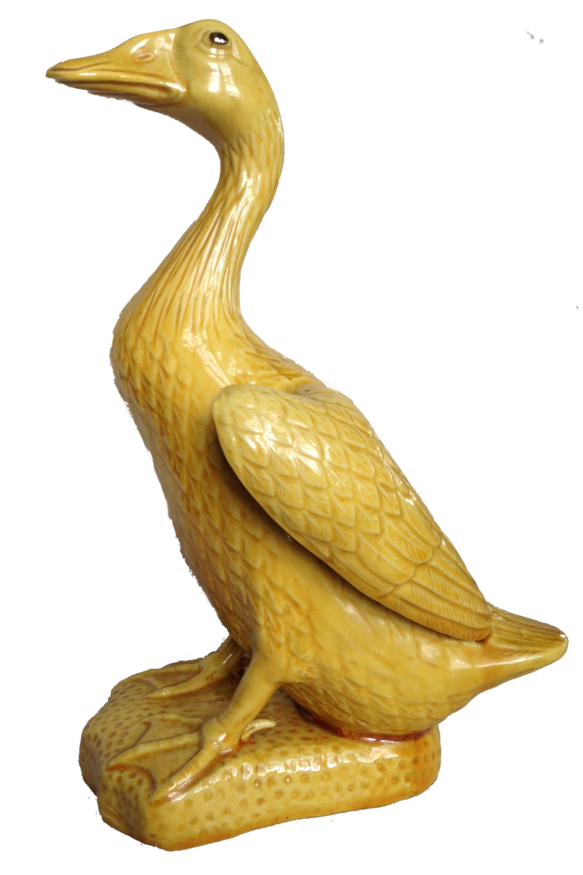
 The Chinese Duck
The Chinese Duck
Another reason we believe Dr. Guild was close to Woodward, besides selling him this still life, is that RSW also sold him another special painting, Winter Song. It was not uncommon for RSW to be selective with where and to whom a particular painting ended up. There is a history of him only letting certain paintings go to certain people. His friends F. Earl Williams, Bartlett Arkell, and Ada Moore come to mind, poet Robert Frost is another. Winter Song was made specifically to exhibit at the 1939 Golden Gate International Exposition curated by his dear childhood friend Harold Grieve. RSW met Grieve when they were neighbors in Los Angeles, CA. It was after his accident and during his recovery that RSW would play tag with the neighborhood kids. Grieve was 16 years younger than RSW but the two remained friends for life, perhaps because of Grieve's interest in art and design. The Golden Gate Exposition was so important to RSW he hastily made "New England Impression" from a photograph he saw and liked, to send to the 1939 New York World Fair, in order to, spend more time on Winter Song.
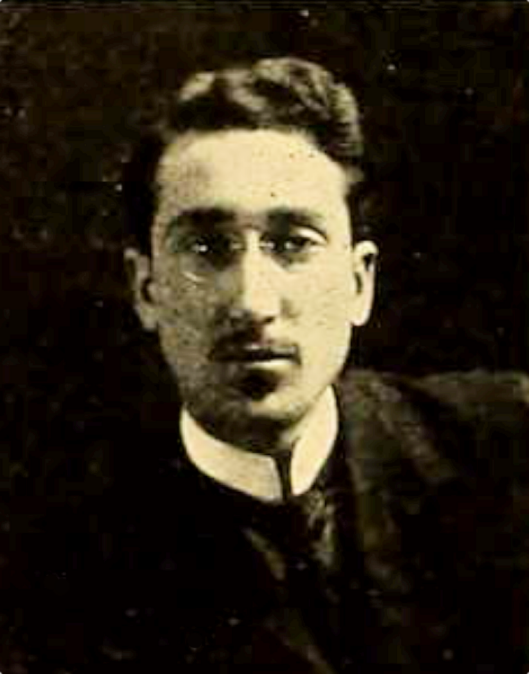
 B. Thurber Guild as a medical student
B. Thurber Guild as a medical student
at Drexel School of Medicine in 1907.
Bruno Thurber Guild (1885 - 1958) was born June 28th to Ellis and Olivia (Rogers) Guild in Holdrege, Nebraska. According to his Drexel College
of Medicine yearbook profile, "he lived only to become wild and terrible." As a teen, he, "journeyed East and camped in New York City, long enough
to attend the Grammar School and Brooklyn Manual Training High School." The profile continues, "While there he heard of the beauties of New
England, and became so interested, that he moved to South Framingham, MA, and even attended the Boston University. The profile's last paragraph
states, "About this time he heard of other medical Colleges, so on a dare, he quit B.U. and joined us, favoring us with his presence at random intervals.
Obviously, the yearbook profiles were written in an amusing and flippant manner but it is very revealing nonetheless. He is portrayed almost as a tramp,
going where the wind takes him as if he was living in the streets. But in truth, his father is a pastor/educator who headed churches in both Boston and
New York City which can also include Brooklyn. While he has more of a direction than the aimlessness his profile suggests, he does share this quality
with RSW of having been a nomad of sorts growing up. The difference is that it appears Dr. Guild did retain a certain amount of restlessness, whereas
RSW wanted nothing more than to have deep roots, a place he called home.
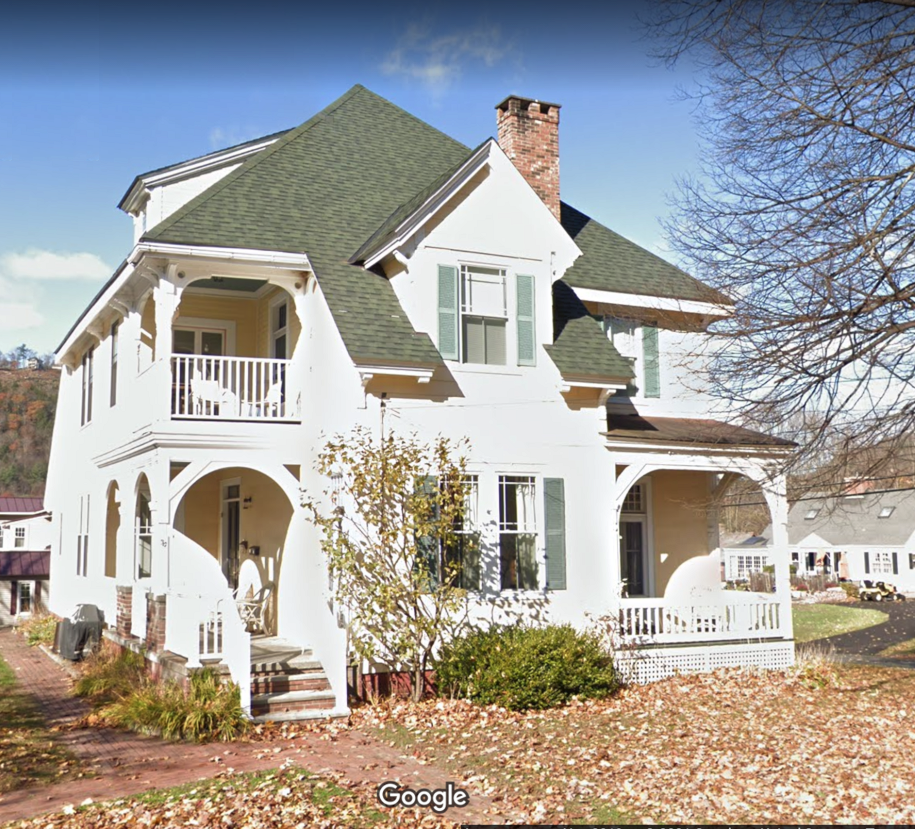
 The Guild home in Shelburne Falls
The Guild home in Shelburne Falls
What we learned about Dr. Guild is that he and his wife Helen (Bennett) married in 1910 in Vanderburgh County, IN. He arrives in Shelburne Falls
around 1913 and sets up a private practice in the Vice Building on Bridge Street. According to the newspaper, the North Adams Transcript, he was also
Director of the area's District Nurse Association which as far as we can tell, is a predecessor akin to what today would be the Visiting Nurses Association
(VNA). Dr. Guild was also appointed to the Executive Committee of the Berkshire District's Massachusetts Anti- Tuberculosis Association and led its 1919
local stamp drive to, "Stamp out Tuberculosis," far exceeding its goal projections. The couple had a home in Shelburne Falls, MA on Severance Street and
according to the 1920 census, Helen's sister was also living in the house. Dr. Guild had a sister too. She was a nurse living in the area. It is unclear if Dr.
Guild was RSW's personal physician and that is how the two became close friends or as Director of the area's District Nurse Association, he supplied RSW
with nurses as he needed. Either way or both, is most certainly how the two met.
Unfortunately, Dr. Guild, perhaps true to his nature, did not stay long in Shelburne Falls. He left rather abruptly in the spring of 1920 shortly after the conclusion
of the stamp drive. The reason given was to take up a larger practice in the Boston area. (N. Adams Transcript, June 25, 1920), perhaps moving quickly on a
sudden opportunity. A month later, the Transcript (July, 28), announces the pending arrival of Guild's replacement, Dr. F.A. Edmonds of Bethel, NY. In that
announcement is a line that may reflect some hard feelings, "... to a large extent, and his [Dr. Edmonds] advent is
welcomed by residents who felt another physician is necessary." Furthermore, the article made it a point to emphasize Dr. Edmonds as,
"... a practicing physician of 20 years. He is a man of middle age, is married and has two children."
It appears to us that there is a clear subtext to the article. Maybe Dr. Guild was not necessarily the ideal fit for the community or it was simply the abruptness
of his departure but it could also be that his father was embroiled in a very public scandal.
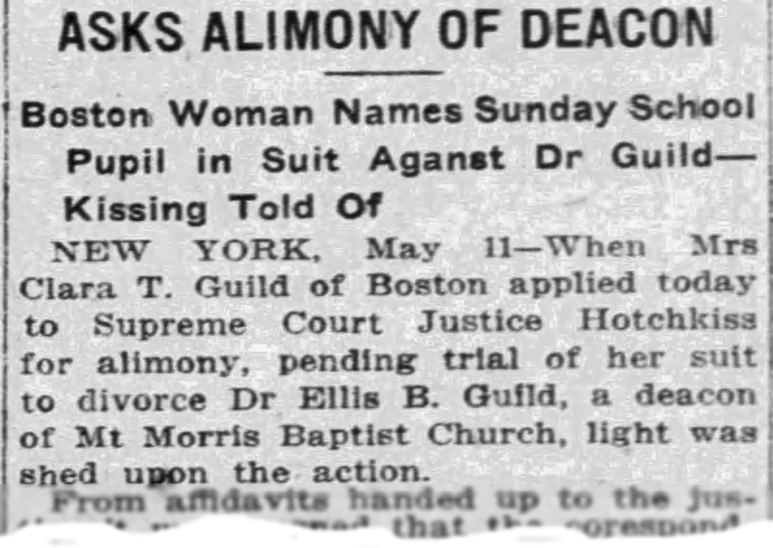
 The Boston Globe, May 12, 1916
The Boston Globe, May 12, 1916
Dr. Ellis Guild sued by divorcing wife
Dr. Guild's father, Dr. Ellis B. Guild, Deacon of the Mt. Morris Baptist Church in New York was being sued for alimony by his second wife Clara after learning the elder Guild was keeping a woman on the side, which included moving her from Boston to his new parish in New York. The other woman was reported to be his student in Boston, now served as his private secretary in New York, and was now living in an apartment a floor below his own in New York. The newspapers reported "detectives listening through keyholes reported amorous sounds coming from the former secretary's place," which we found extraordinary. What kind of detective gets involved in what is clearly a civil case? Though it was not specified we believe the detectives referred to by the papers were private detectives hired by Mrs. Guild. In any event, we did not want to spend a great deal of time on this angle but we could not ignore it either. The suit was big enough and salacious enough to grab front-page headlines in the Boston Globe and New York papers. It was covered not just in the rags but very respected publications. The case began in 1916 and ran on for a number of years afterward. It could be that it was a bit much for a small, rural area like Franklin County and the Berkshires. Dr. Guild needed to move on if for nothing else a fresh start.
If Dr. Guild was hiding from the scandal, Boston seemed like an odd choice to make but at the same time it is big enough to blend in without the same sort
of attention one would get in small town like Shelburne Falls. We also do not know if it was Boston so much as Boston-adjacent. Dr. Guild's 1942 draft card, just
12 years removed from Shelburne Falls, listed two addresses as his residence; one of them crossed out, we suspect, by a draft processing agent. There was an
address for Dorchester, MA (the one crossed out) and the other was for Sands Points, LI, NY. It is unclear why the Guilds would have these two homes. Sands Point
Long Island is among the weathiest, most fashionable areas of Long Island's northern "Gold Coast." The Dorchester address is right in the middle of what is primarily
a modest, residential middle-class neighborhood. However, we could not find any land records under the Guild name anywhere in Suffolk County so maybe the house
was a rental. We also wonder if the house in Sands Point was maybe his father's who had passed by this time. Nonetheless, he did have two addresses at that time
and four years later RSW list only the Sands Point home in his painting diary.
A search of the Massachusetts Land Records website for both Franklin and Sulfolk Counties produced only one hit for Dr. Guild ever buying property in
the Commonwealth and that was in 1946 when the Guilds purchased property in Rowe, MA, in Franklin County. The year it just so happens that RSW sold the two
paintings to the Guilds. Note in RSW's diary comment that he specifically states, "The Guilds are my close friends and it hangs in
a very beautiful home." Does this mean the home in Rowe? We think it might. Otherwise why not specify "their home" since he
did not mention Rowe at all? But the purchase of this property also says something about, perhaps, how much the Guilds liked the area. There is a good chance that
Dr. Guild is now retired or preparing for retirement and for them to return to Northwestern Massachusetts says something about what the area meant to them.

.png)

